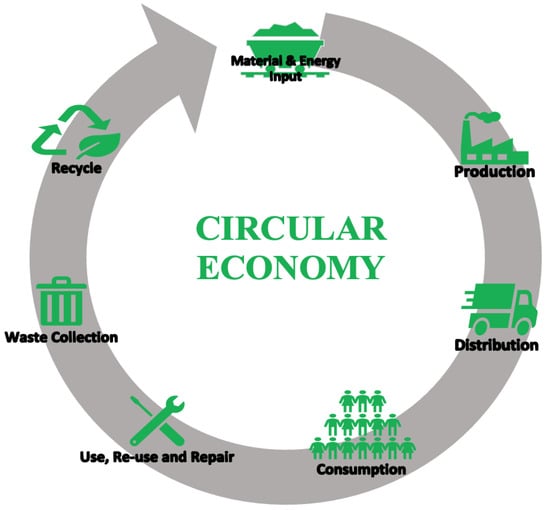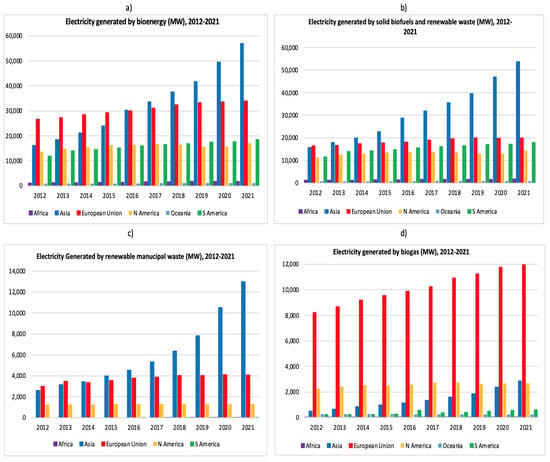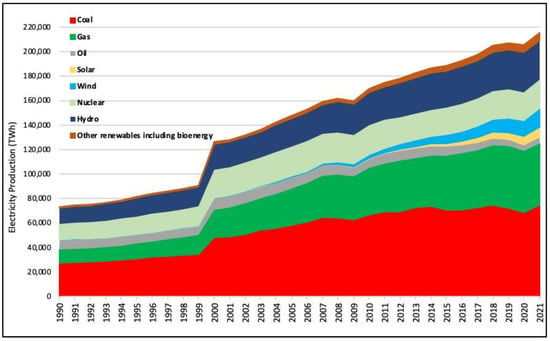Sustainability is a strategic approach to develop a more sustainable economy to support the environment and socio-economic development. Literature on sustainability has been concerned mainly with global warming and environmental degradation issues, whereas the Circular Economy (CE) concept has recently been suggested as an alternative solution to support market sustainability and deal with both environmental and socio-economic challenges. In order to tackle these challenges, countries must switch from linear economies that follow the “take-make-dispose” principle to circular and sustainable economies. This study applies a structural and conceptual literature review to elucidate the most decisive determinants in the formation of circular strategies, particularly in the context of the energy sector. This study examines obstacles that hinder CE adoption and formulates drivers and measures to overcome them. The strategic literature review shows that the circular approach is critical in achieving sustainable development. Circularity can be considered a novel and innovative approach to alleviating the contradiction between rapid economic growth and energy and raw materials shortages. The CE structure must be considered as a sustainable foundation to enhance economic growth by avoiding waste, preserving natural capital, managing resource scarcity, recycling materials, maximizing energy efficiency, and recirculating them into the economy. Analysis reveals that the circular system is a key pillar of sustainability, security, and efficiency in the energy sector. The sustainable energy transition requires incorporating the CE principles in the design process. It also revealed that both public and private sectors must move away from the linear paradigm towards circularity to achieve CE implementation.
1. Introduction
Since the 20th century, greenhouse gas emissions have been the primary driver of climate change and global warming, leading to various health and environmental issues. Aside from climate change, air pollution, respiratory diseases, food shortages, and wildfire outbreaks result from climate change caused by greenhouse gases. In light of this, global emissions have caused concern in all economies [
1,
2,
3]. Several factors contribute to global emissions, including a sizeable simultaneous surge in population, consumption, and economic growth, which are associated with an increase in resource and land consumption and waste production [
4]. Population growth will increase the demand for natural resources, specifically energy, raw materials, water, and fertile land. Environmental pressure increases dramatically as the demand for these resources grows [
5,
6]. Humanity’s irreversible effects on the earth could make it impossible for the next generations to enjoy high living standards, primarily due to global warming, biodiversity loss, and land degradation [
7].
Electricity production is one of the sectors contributing significantly to greenhouse gas emissions. Approximately 60% of the world’s electricity is generated from fossil fuels, requiring a gradual shift towards a more secure, sustainable, and accessible energy system. As reported by the International Energy Agency (IEA), over 40% of all energy-related emissions come from electricity generation. Globally, fossil fuels emit approximately 34 billion tonnes of CO
2 annually [
8,
9].
In order to mitigate environmental threats, countries should adopt green strategies to establish a modern, circular, and sustainable economy. To transition toward a sustainable low-carbon energy system, countries must switch from fossil fuels to renewable energy sources and improve their energy efficiency. Recently, the world has seen an acceleration of ambitions regarding energy transition and decarbonization, particularly in terms of achieving net-zero carbon emission targets. In order to achieve net-zero targets and energy-efficient development, all industries must modify their infrastructures, a process that will require large-scale reconstruction and retrofitting for a very high cost. Energy industries also need to be entirely redesigned and implement new technologies in the process of electricity production or industrial activities (i.e., batteries and solar photovoltaic (PV)). In addition, the linear decarbonization process only focuses on the reduction of emissions from energy production and renewable energy consumption, which are not sufficient to reach net-zero targets. The CE approach is recently on government agendas as an effective means to support sustainability, accelerate decarbonization, and facilitate energy efficiency [
10]. Therefore, CE approaches are complementary to existing energy and decarbonization policies in enhancing the energy transition toward a clean environment. Creating resources from waste is one of the most effective ways to contribute to sustainable development. To reduce waste and emissions in energy transition policies, policy makers must consider CE principles in their energy transition guidelines.
Over the past century, linear economies have dominated industrial development [
11]. In an economy based on linearity, natural resources are directly transformed into waste because of the way in which they are designed and manufactured [
12,
13]. The process is comprised of three phases: take, make, and waste [
14]. There is, therefore, a great deal of waste produced in traditional and linear economies. In contrast, circularity is an excellent replacement for the linear economy to eliminate waste, maximize resource efficiency, optimize material consumption, take advantage of renewable resources, and continuously replenish natural resources [
15]. In circular economies, raw materials are reused instead of being produced from scratch, and a closed loop can be employed to achieve this objective [
16]. The electricity sector can benefit from the CE strategies when dealing with renewable energy like solar, wind, and bioenergy. Over the past decade, the CE has gained popularity in areas such as sustainability, energy efficiency, resource management, and productivity. Circular economies make efficient use of bio-based materials in many different ways as they cycle between the economy and the environment. Environmental concerns such as climate change, biodiversity loss, waste, and pollution can be alleviated through CE strategies.
In terms of energy market perspective and CE strategies, countries have the potential to produce electricity from biomass, biogas, wind, and solar or use energy store systems or portable batteries. New technologies are being developed to generate energy from waste in a circular manner. As traditional technologies and coal-fired power stations are replaced by infrastructures and new technologies, it is essential to apply CE principles to unlock waste’s resource potential and minimize its management challenges. For example, waste-to-energy (WtE) generation technologies have recently emerged and gained increasing attention. WtE technologies utilize waste to generate energy in the form of electricity or heat. Like other power generators that use thermal coal, oil, or solar, WtE plants use waste as a fuel to produce electricity. In these plants, the concept of energy from waste involves converting non-recyclable materials into energy through various methods, including thermal and non-thermal processes (combustion, gasification, landfill gas recovery, and anaerobic digestion). A WtE system contributes to a sustainable and circular economy in various ways. As one of the solutions to increase circularity in the energy sector, we provide an explanation of WtE technologies in this study.
2. Conceptual Analysis of Circular Economy
2.1. Global Review of Circular Economy
In the late 1970s, the concept of the CE gained momentum. It was introduced by Kenneth E. Boulding, who first mentioned it as an academic concept in 1966, criticizing linear “cowboy economies” and describing a future “spaceship economy” in which all used resources were redirected back into it [
13,
100]. The CE, derived from Boulding’s theory, was developed by the environmental economists Pearce and Turner [
101] in which they discuss the lack of markets and prices for environmental goods and emphasize the need to internalize these costs. It is more likely that a transition towards a circular system will occur if these externalities are internalized [
102]. There are several authors, including Andersen [
103], Ghisellini et al. [
13], and Su et al. [
104], who give credit for the introduction of the concept to Pearce and Turner [
105].
Some specific features of CE were introduced by Stahel and Reday [
106], particularly in the field of industrial economics. In their conceptualization, a loop economy is used to describe industrial strategies for preventing waste, creating jobs, efficiently utilizing resources, and dematerializing the industrial system.
As stated by Ghisellini et al. [
13], a circular strategy is an economic structure designed to improve resource efficiency and interaction between the economy, environment, and society. Accordingly, CE can be considered as a novel and innovative approach to alleviating the contradiction between rapid economic growth and shortages of energy and raw materials [
107].
There have been several academic reviews about CE concepts, including those by Andersen [
103], Su et al. [
104], Sassanelli et al. [
108], Kristensen and Mosgaard [
109], De Pascale et al. [
110], and Mhatre et al. [
111]. There has been a particular focus on supply chains, sustainable business models, and circular product design.
The principles of CE are as follows: (1) enhance and preserve natural resources through the management and replenishment of natural capital; (2) make optimal use of materials and resources to maximize value; and (3) eliminate negative externalities from the economic system and lifestyles in order to promote system effectiveness [
112,
113].
Over the past two decades, the CE has gained momentum among policymakers, influencing national, regional, and local governments, as well as inter-governmental agencies. Germany has been a pioneer in the incorporation of the CE into national laws. In 1996, Germany passed the CE and Waste Management Act (also referred to as the Circular Economy Act or the “KrWG”) that explicitly promoted the concept of CE [
114]. In January 2002, this was followed by Japan, which established a comprehensive legal framework, titled Japan’s 2002 Basic Law, to achieve a recycling-based society [
104,
115,
116]. Another country was China, which introduced the “Circular Economy Promotion Law of the People’s Republic of China” in January 2009 [
117].
Figure 1 is a graphical scheme of a cyclical pattern in a circular economy.
Figure 1. Circular economy process.
2.2. Waste to Energy
Millions of tons of waste are constantly produced and dumped in landfills, which adversely affects ecosystems, the environment, and the health of humans and wildlife. New technologies are being developed to generate energy from waste in a circular manner. Waste-to-energy (WtE) is the process that uses waste to generate energy in the form of electricity or heat. Like other power generators that use thermal coal, oil, or solar, WtE plants use waste as a fuel to produce electricity. In these plants, the concept of energy from waste involves converting non-recyclable materials into energy through various methods, including thermal and non-thermal processes (combustion, gasification, landfill gas recovery, and anaerobic digestion). Economies are striving to develop technologies for compressing and disposing of waste while also generating energy from it. The energy that is produced in the form of electricity, heat, or fuel using WTE plants is renewable, clean, and environmentally friendly, producing fewer greenhouse gases and having a limited impact on the environment [
118,
119].
Recently, the phenomenon of WtE generation has emerged and gained increasing traction [
120,
121,
122]. In developed countries, it is being successfully implemented as a measure of waste management and energy security. Therefore, many countries have started using waste to recover energy [
123]. A WtE system contributes to a sustainable and circular economy in the following ways:
-
Recovering energy from waste can be significantly beneficial in facilitating energy transition and reaching zero-carbon decarbonization targets;
-
WtE methods are instrumental to enhance energy security, reduce reliance on fossil fuels, and generate clean and reliable sources of thermal energy, electricity, and fuels;
-
Implementing a sustainable framework with no contradiction with existing decarbonization measures;
-
One of the most effective approaches to enhance the efficiency of power generation and energy consumption through waste incineration operations;
-
Recovery of secondary raw materials from incineration residues;
-
Delivering a hygienic service to society through municipal waste management and the treatment of combustible non-recyclable waste.
Let us examine how waste to energy is currently applied worldwide. Figure 2 shows the generating capacity of power plants that use renewable energy sources to produce electricity. As presented in Figure 2, the amount of electricity generated by waste globally increased from 2012 to 2021, with Europe, Asia, and North America generating the most electricity from biogas, bioenergy, renewable municipal waste, and solid biofuels.
Figure 2. Electricity generated by type of waste renewable energy. Source of Data: International Renewable Energy Agency (IRENA) [
124], Figures “
a”, “
b”, “
c” and “
d” show the generating capacity of power plants using bioenergy, biofuels, renewable waste, and biogas, respectively.
Despite the growing application of renewable energy and waste in electricity generation in the last decade, fossil fuel is still the primary source of energy. Figure 3 illustrates the level of different types of fuels employed to generate electricity. It is evident that there is a significant difference between renewable energy (including waste energy) and high-carbon fuels. In 2021, nuclear power and renewable energy generated more than one-third (36.7%) of global electricity. As for waste energy, it contributed only 3%, which is a very small percentage. Therefore, countries should pay significant attention to waste resources to generate electricity in order to repurpose waste in a positive way and also diminish coal-fired generator emissions.
Figure 3. Global electricity production by source of fuel. Source of Data: International Renewable Energy Agency (IRENA) [
124].
This entry is adapted from the peer-reviewed paper 10.3390/en16041779



